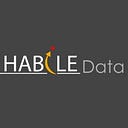5 Ways Semantic Segmentation is Revolutionizing AI
Semantic segmentation, a key computer vision process, labels each pixel in an image for machine understanding. It is essential for enhancing AI accuracy and driving innovation, leading to smarter, more responsive systems.
Semantic segmentation is a crucial computer vision process that assigns a class label to every pixel in an image, enabling machines to understand visual data in a more human-like manner. As a sub-set of image segmentation, it plays a vital role in distinguishing different objects and areas within an image. The applications of semantic segmentation in AI extend across autonomous vehicles, healthcare, agriculture, and more.
The market for AI in healthcare is projected to reach $45.2 billion by 2026. This clearly indicates the growing reliance on sophisticated visual recognition systems.
For autonomous vehicles, semantic segmentation significantly enhances object detection accuracy, demonstrating its profound impact on advancing AI capabilities and applications.
5 ways how semantic segmentation is revolutionizing AI
Semantic segmentation is a challenging data labeling task in machine learning, especially in computer vision. In essence, it involves teaching machines to recognize different objects and scenes in semantic images or videos, which is a natural ability for humans. Let’s discuss the benefits of semantic segmentation to diverse industries and also how it is promoting their development:
1. Enhancing autonomous driving
Semantic segmentation enables self-driving cars to accurately interpret their surroundings. It involves classifying each pixel in an image into predefined categories, such as lanes, vehicles, pedestrians, and road signs, which is pivotal for real-time decision-making and navigation.
Autonomous vehicles leverage semantic segmentation to adapt to various driving conditions, and ultimately improve overall transportation safety and efficiency. The autonomous vehicle market is projected to reach $556.67 billion by 2026, growing at a CAGR of 39.47% from 2019 to 2026, underscoring the importance of these advancements.
Models such as DeepLab and U-Net have significantly enhanced object detection accuracy, making autonomous systems more reliable. These models allow cars to identify and track objects in real-time, ensuring safer navigation through complex environments.
2. Revolutionizing medical imaging
Known for revolutionizing medical imaging by improving the precision and efficiency of medical diagnostics, semantic segmentation for medical imaging involves classifying each pixel in medical images, such as CT scans and MRIs, to detect and delineate tumors, lesions, and other anomalies.
By providing detailed segmentation maps assists radiologists in making accurate diagnoses and treatment plans. The AI in the healthcare market is projected to reach $148.4 billion by 2029, reflecting the growing reliance on AI-driven diagnostic tools.
Models like U-Net, especially used in deep learning for image understanding and identifying intricate patterns in medical images, show considerable accuracy. This has significantly reduced the time and effort required for manual analysis. Semantic segmentation not only improves diagnostic accuracy but also facilitates the early detection of diseases, leading to better patient outcomes and more personalized treatment strategies.
3. Transforming agricultural monitoring
It enables precision agriculture by optimizing farming practices through a detailed analysis of crops and field conditions. Semantic segmentation classifies each pixel in aerial and satellite images to monitor crop health, detect infestations, and assess soil conditions. This technology allows for the precise identification of areas needing intervention, such as targeted pesticide application and irrigation.
Additionally, it aids in yield prediction by analyzing growth patterns and environmental factors. AI in the agriculture market is expected to grow at a CAGR of 25.1%, reaching $7.85 billion by 2030.
This growth highlights the increasing reliance on AI-driven tools to enhance farming productivity and sustainability. By leveraging semantic segmentation, farmers can make data-driven decisions, reduce resource use, and improve overall crop management.
4. Advancing urban planning and smart cities
It is successfully advancing urban planning and smart cities. Semantic segmentation provides a detailed analysis of satellite and aerial imagery, crucial for land use and infrastructure planning. It classifies each pixel in an image, enabling urban planners to accurately identify buildings, roads, and other infrastructure elements.
It also plays a vital role in managing traffic flow and enhancing public safety by detecting congestion and optimizing traffic management systems. By leveraging semantic segmentation, cities can make informed decisions, improve resource allocation, and enhance overall urban living conditions.
5. Improving augmented reality and virtual reality
Crucial in enhancing augmented reality (AR) and virtual reality (VR) applications, semantic segmentation enables machines to accurately understand and interpret their environments. Its pixel-level image labeling in real-time video feeds significantly improves object recognition and interactivity within virtual environments. It helps users accurately identify and segment objects to engage more seamlessly with digital elements, leading to more immersive experiences.
Furthermore, semantic segmentation improves AR object recognition accuracy, making interactions more intuitive and realistic. This advancement in technology enhances user engagement and opens new avenues for applications in gaming, education, and training, revolutionizing how we interact with digital content.
Conclusion
As we have witnessed, semantic segmentation is revolutionizing AI across multiple industries by providing precise pixel-level classification in images. In the realm of AR and VR, semantic segmentation enhances object recognition and interaction, creating immersive experiences.
Image annotation for computer vision is advancing and so are future advancements in semantic segmentation and deep learning models increasing the computational power. It ultimately is refining semantic segmentation techniques. This will make it more accurate and efficient. As semantic segmentation continues to evolve, its impact on various industries will become even more profound, driving innovation and improving operational efficiency.
Ultimately, semantic segmentation stands as a cornerstone of modern AI, transforming how machines interpret and interact with the world, leading to smarter, more responsive systems.
